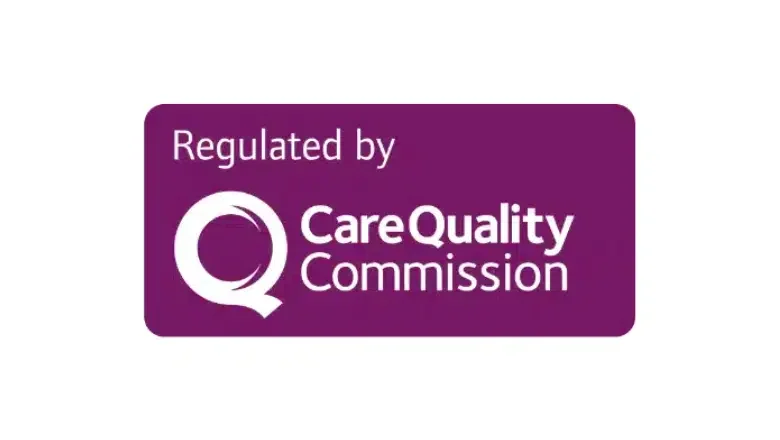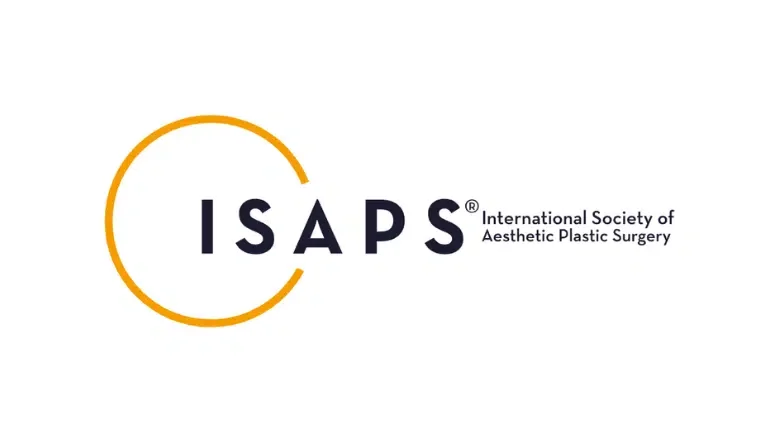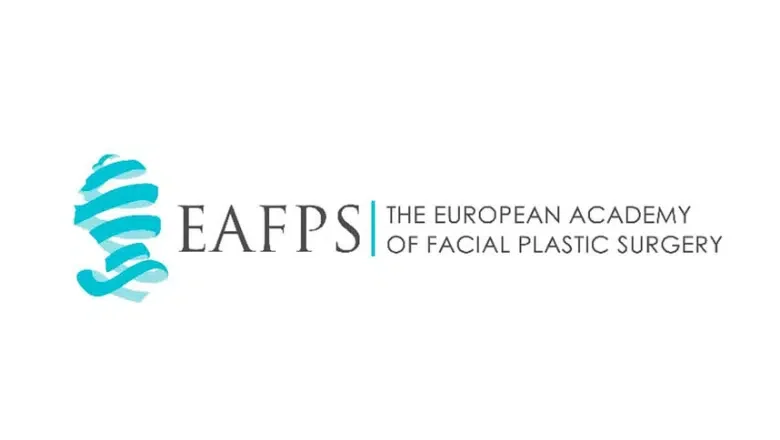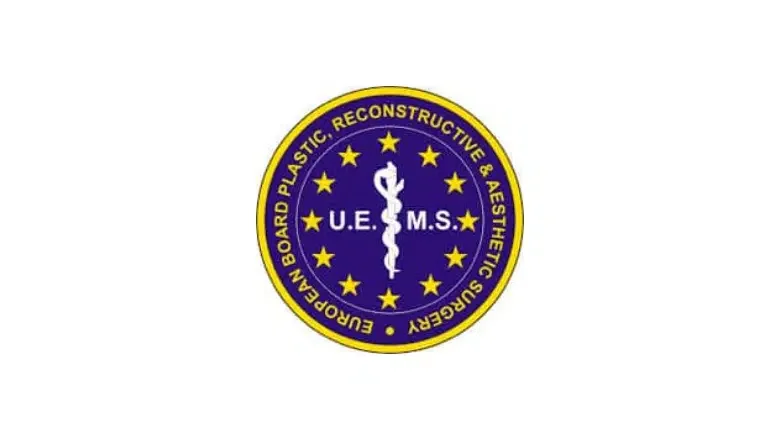One Stitch Nose Lift London
A one-stitch nose lift, also known as a suspension rhinoplasty, is a nose reshaping procedure which involves the use of specialised sutures designed to lift the tip of the nose. Many patients would like a subtle improvement in the appearance of their noses instead of a dramatic change. Patients who are already happy with the upper third of their nose and do not desire any change to the bone structure may be suitable for a nose tip lift with sutures. In addition to lifting the nose, a suspension rhinoplasty can help correct localised deformities affecting the tip and alter the nose length without the incisions or scars of traditional rhinoplasty surgery.
Traditional rhinoplasty surgery is designed to alter the size and shape of the nose and can address both aesthetic and functional concerns in the same procedure. Surgical rhinoplasty is more invasive compared with non-surgical rhinoplasty with fillers and a one stitch nose lift. In many cases, a rhino-tip surgery, also known as tip plasty or “mini nose job”, can improve the tip of the nose by surgically manipulating the cartilage which forms the tip of the nose to produce an aesthetically desirable nasal tip. Your surgeon can advise you on the most appropriate treatment. However, many patients may wish to choose a less invasive alternative for shaping the nasal tip. The nose lift with sutures is more affordable and involves a much quicker recovery than tip plasty; however, the results can be less predictable. Rhino-tip surgery takes about one hour to perform under a general anaesthetic and involves a quick recovery.
RELATED: What is a non-surgical nose job?
What is a Suspension Rhinoplasty?
For those who are content with the general shape of their nose but wish to make slight refinements to the tip, the nose tip elevation procedure offers an ideal solution. Known medically as rhinoplasty suspension, this technique is tailored for individuals seeking minor adjustments without the need for extensive surgical intervention.
This surgical procedure is easily carried out as an outpatient with a local anaesthetic. It takes roughly 30 minutes to perform and involves little or no discomfort. A nose lift does not involve scarring and takes 3 to 4 weeks for healing to occur. The procedure is ideal for people who want to alter the nasal tip position without a full rhinoplasty.
Various types of soft tissue lifting procedures using threads have been used in facial rejuvenation for many years for lifting droopy brows, sagging cheeks or ill-defined jawlines. The principal behind a one-stitch nose lift involves placing specialised suture threads through small incisions. Correct orientation of the sutures in a vertical direction helps to lift a droopy nose tip to a higher level. This involves the tiny barbs within the suture, lifting and anchoring the soft tissue.
A one-stitch nose lift is an alternative treatment to a non-surgical rhinoplasty, also known as a ‘liquid rhinoplasty’. Non-surgical rhinoplasty with nose filler involves using hyaluronic acid-based dermal filler to alter the size and shape of the nose without the need for rhinoplasty surgery. Soft tissue filler can help lift the tip of the nose precisely according to a patient’s treatment goals. It should be borne in mind that non-surgical rhinoplasty is considered temporary. The results of treatment last for up to 12 months on average. A nose tip lift with sutures produces longer-lasting results to improve a drooping nasal tip or an excessively long nasal bridge. A long nasal bridge can effectively look shorter by rotating the nose tip upwards.
This minimally invasive procedure involves carefully lifting and securing the nasal tip with specialised sutures. By doing so, it achieves an uplifted and more refined appearance, enhancing the overall harmony of the facial features. The use of sutures allows surgeons to adjust the nasal tip with precision, ensuring the results align closely with the patient’s aesthetic desires.
One of the most significant advantages of the nose tip elevation is that it circumvents the need for extensive surgery associated with traditional rhinoplasty. As a result, patients can avoid lengthy recovery periods and the discomfort often linked to more invasive procedures. Moreover, this technique leaves no visible scars since it doesn’t require external incisions, making it an attractive option for those concerned about postoperative marks.
In addition to its cosmetic benefits, the procedure typically involves a shorter operation time and allows for a quicker return to daily activities. The nose tip elevation is a practical choice for individuals aiming for subtle yet impactful enhancements to their nasal appearance, achieved through a straightforward and efficient surgical approach.
Meet Dr Spiros - Specialist Rhinoplasty Surgeon
With a distinguished career spanning over 25 years, Dr Spyridon Vlachos is a leading specialist in rhinoplasty surgery. A certified surgeon with international training, Dr Vlachos has honed his skills across the globe. He specialises in reconstructive surgery for the head and neck, a foundation that has propelled him to excel in the intricate field of primary and revision rhinoplasty.
Benefits of a One-Stitch Nose Lift
The one-stitch nose tip lift is a simple yet effective cosmetic procedure designed to enhance the shape of the nose tip using sutures. This treatment has gained popularity among individuals who wish to refine the appearance of their nose without undergoing invasive surgery. Many people opt for this procedure to achieve a more lifted, defined, and aesthetically pleasing nose tip without the long recovery associated with traditional rhinoplasty.
One of the key benefits of a one-stitch nose lift is the speed and efficiency of the procedure. It typically takes no more than 45 to 60 minutes to complete, making it an excellent option for those with busy schedules. Since the treatment is performed under local anaesthetic, patients remain fully awake and experience minimal discomfort. This eliminates the risks associated with general anaesthesia, making the procedure a much safer alternative to surgical rhinoplasty.
Unlike traditional nose surgery, which requires extensive preparation and a lengthy recovery period, a one-stitch nose tip lift involves minimal downtime. Patients can usually return to their normal daily routines immediately after the procedure. There is no need for complex aftercare, and most individuals experience only minor swelling or bruising, which subsides quickly.
Another advantage is the instant transformation that patients can see. As soon as the sutures are in place, the nose tip appears more lifted and refined. This immediate enhancement provides a confidence boost without the wait associated with traditional surgical results. Furthermore, because the procedure does not involve cutting or reshaping the nasal structure, the risk of complications is significantly lower.
RELATED: How to make your nose smaller
Is the One-Stitch Nose Tip Lift the Right Choice for You?
If you’re considering a subtle enhancement to your nose without undergoing significant structural changes, the one-stitch nose tip lift might be the ideal solution. This procedure is especially suitable for individuals who have a drooping nasal tip or those who wish to refine the appearance of their nose in a minimal yet effective way.
Designed for adults over the age of 18, the one-stitch nose tip lift focuses on elevating and reshaping the tip of the nose to achieve a more aesthetically pleasing look. It offers the benefits of traditional rhinoplasty but without the need for extensive surgery or prolonged recovery times. Utilising a minimally invasive technique can provide noticeable improvements while leaving the overall structure of the nose intact.
This option is perfect for those seeking to enhance their facial harmony and boost their confidence without the commitment of more invasive surgical methods. If you’re aiming for a refined nasal tip and a rejuvenated appearance, the one-stitch nose tip lift could be the right choice for your aesthetic goals.
One Stitch Nose Lift vs Nasal Tip Plasty - Which is better?
Both a one stitch nose lift and tip plasty have their own advantages and limitations, and which one is better would depend on the individual’s specific needs and goals.
A nose lift with sutures is a less invasive procedure than a tip plasty, and it can be performed in a shorter amount of time with less downtime. It may be a good option for individuals who are looking for a subtle improvement in the appearance of their nose, but who do not want to undergo more extensive surgery.
A tip plasty, on the other hand, can provide more predictable results through its ability to precisely reshape the nose tip and can address a wider range of nasal tip concerns. It may be a better option for individuals who have more significant asymmetry, projection, or size issues with their nasal tip.
Here at Centre for Surgery, we generally recommend tip plasty, also known as tip rhinoplasty for most nasal tip concerns. Tip plasty, as a surgical procedure, can provide more dramatic results and can address a wider range of nasal tip concerns than a one-stitch nose lift. It is a more comprehensive approach to reshaping and refining the nasal tip and can address issues such as asymmetry, projection, size, and shape. In addition, the results of a tip plasty are typically long-lasting and can have a significant impact on the overall appearance of the nose.
One Stitch Nose Lift Procedure
The one-stitch nose lift procedure involves using specialised sutures to lift a drooping nose tip. A procedure can also help to shorten an excessively long nose. A nose lift is a type of ‘profileplasty‘ procedure, as the effects of the procedure are most noticeable when a person is viewed from the side. It is a minimally invasive surgical procedure with smaller incisions and visible scars. Compared to a full rhinoplasty, the procedure does not involve breaking bones or applying nose splints for up to 2 weeks after the procedure.
Your doctor may be able to show you a 3-D reconstruction of how your nose could look after the procedure. It is important to note that this is only an approximation, and the actual results may differ from the predicted simulation results. The procedure involves making small incisions in the nasal tip. The sutures are then carefully inserted and oriented vertically to help lift the nasal tip before being gently anchored in place. A useful analogy involves manipulating a broken bone into the correct position before being placed in a well-moulded plaster. The position of the nasal tip is maintained in its new position using specialised tape during the healing period.
On average, the nose requires approximately 3 to 4 weeks to heal before it maintains its new enhanced shape. Our postoperative nurses will show you that you have to wear the recommended supportive tape to maintain the position of your nose tip lift. If you have any concerns about the tape peeling off, please book an appointment to see us, and we can adjust this for you. Most patients experience very little bruising and swelling after the nose thread lift procedure. Any mild discomfort is easily controlled with over-the-counter painkillers such as paracetamol. Getting the best results after a one stitch nose lift involves following the postoperative care instructions to ensure your healing and recovery are as smooth as possible. This will help ensure the nose tip is maintained in its new lifted position.
Risks of a One Stitch Nose Lift with Sutures
Being a minimally invasive surgical procedure, the risks of treatment are much less compared with full rhinoplasty surgery. Your surgeon will discuss the risks of a mini nose lift at your consultation. The risks of treatment can be minimised by following the preoperative and post-operative care instructions in full. You should also stop smoking before the procedure to improve wound healing. Any medicines containing aspirin should be stopped to reduce the risk of bleeding.
Why Choose Centre for Surgery for Your Nose Tip Lift Procedure?
At Centre for Surgery, we pride ourselves on being a leading provider of specialised cosmetic surgery in the UK, known for our excellence in patient care and exceptional surgical outcomes. Our team of expert surgeons, all of whom are on the General Medical Council (GMC) Specialist Register, have decades of experience and a deep understanding of the latest surgical techniques. Our commitment to delivering personalised care in a world-class setting makes us the premier choice for anyone considering a nose tip lift or other cosmetic procedures.
Our approach at Centre for Surgery is always patient-focused. We believe in working closely with you to understand your aesthetic goals and ensure you are fully informed about every step of the process. Our Baker Street clinic is equipped with state-of-the-art surgical technology, and we are proud to offer a comfortable and safe environment for all our patients. From your initial consultation to your final post-surgical follow-up, we are dedicated to ensuring you feel supported, confident, and satisfied with your results.
What Our Patients Say About Centre for Surgery
Our patient satisfaction speaks volumes about our dedication to providing outstanding service. Here are just a few testimonials from individuals who have undergone cosmetic procedures with us:
- Hannah R.: “My experience at Centre for Surgery was exceptional from start to finish. The staff made me feel completely at ease, and my surgeon truly listened to my concerns and desires. The results exceeded my expectations, and I couldn’t be happier!”
- James L.: “I was nervous about having surgery, but the team at Centre for Surgery made the entire experience stress-free and straightforward. The aftercare was impeccable, and I felt well taken care of throughout my recovery.”
- Sophie M.: “Choosing Centre for Surgery for my nose tip lift was the best decision I’ve ever made. The team was so professional and knowledgeable, and the facilities were second to none. The results are natural, and my confidence has been transformed.”
Booking Your Consultation
If you’re ready to discuss your cosmetic goals or want to learn more about the nose tip lift, our team is here to guide you. We offer an in-depth consultation process where we will assess your individual needs and explain the procedure in detail. Contact us today to book your consultation:
- Phone: 0207 993 4849
- Email: contact@centreforsurgery.com
To learn more about our team of specialists, visit our Meet the Team page. For further details about why we’re the top choice for cosmetic surgery in London, explore our About Us page.
Finance Options for Your Procedure
We understand that affordability can be a concern when considering cosmetic surgery. That’s why we offer flexible finance options, including 0% APR plans with Chrysalis Finance, to help make your desired procedure more accessible. For more information on financing your surgery, please visit our Finance Options page.
Stay Informed with Our Plastic Surgery Blog
We’re committed to educating our patients, and our comprehensive Plastic Surgery Blog is packed with insights and advice on everything from choosing the right procedure to understanding your recovery journey. Whether you’re curious about the latest trends in cosmetic surgery or looking for expert advice, our blog is an invaluable resource.
Common Questions Answered
Have questions about your surgery or recovery? Check out our Clinic FAQs for detailed answers to some of the most frequently asked queries from our patients.
We look forward to welcoming you to our Baker Street clinic in London, where your transformation journey begins. Visit our Baker Street clinic page for directions and more details. At Centre for Surgery, we’re here to help you achieve your aesthetic dreams with expertise and care.
FAQs
-
Why is nose tip surgery preferred over a nose lift with sutures?Nose tip surgery and nose lift with sutures are two different procedures that can be used to alter the shape and appearance of the nose tip. Nose tip surgery, also known as tip plasty, is a surgical procedure that involves making incisions and reshaping the underlying cartilage to achieve the desired look. A one stitch nose lift, on the other hand, is minimally invasive and involve using specialised sutures to lift and reshape the nose tip.
While a mini nose lift can be effective in some cases, there are some key reasons why nose tip surgery may be preferred over nose sutures:
More precise results: Nose tip surgery allows for more precise and comprehensive reshaping of the nose tip, as the surgeon can directly manipulate the underlying cartilage to achieve the desired look. In contrast, nose threads are limited in the types of changes they can make to the nose tip, and the results may be less predictable.
Longer-lasting results: Nose tip surgery provides longer-lasting results than nose sutures, as the reshaping of the nose tip is achieved through the surgical alteration of the underlying cartilage. Nose sutures, on the other hand, only provide temporary results, as the threads are eventually absorbed by the body.
More dramatic changes: Nose tip surgery can be used to make more significant changes to the nose tip, such as reducing or increasing the size, improving the shape, or correcting asymmetry. A one stitch nose tip lift, on the other hand, are limited in the types of changes they can make and may not be as effective for more significant alterations. -
What is the minimum age for a one stitch nose lift?People who are considering having a nose suspension procedure should be at least 18 years old. By this time, the growth and development of the nose will have been completed.
-
When is it not advisable to have a mini nose tip lift?We would not recommend the nose thread lift procedure to those under the age of 18 as the nose is still undergoing active growth and development. Some people may have breathing difficulties caused by a deviated septum or may require more extensive nose reshaping. A surgical nose job would be the most appropriate treatment option in this case.
Nose thread lift results are much longer than non-surgical rhinoplasty with filler. If you would like to know how you could look after the nose tip procedure, we recommend having a liquid rhinoplasty as a tester first.
Non-surgical rhinoplasty is a temporary procedure with results lasting up to 12 months. -
How should I prepare for the nose tip lift with sutures?Your surgeon will provide detailed preoperative instructions before the procedure, including stopping certain medications to reduce the risk of bleeding.
Aspirin or medicines containing aspirin are an example of medications which may cause bleeding.
You should also reduce your alcohol intake before the procedure and stop smoking as this can affect wound healing after the procedure and may affect the final results.
-
Is a nose lift with sutures painful?A mini nose tip lift does not involve surgically manipulating the nasal bones. The procedure takes no more than 45 to 60 minutes to carry out and involves an injection of local anaesthetic, which makes the procedure virtually painless followed by small incisions.
-
Will my nasal bones need to be broken?A one stitch nose lift does not involve breaking the nasal bones as is commonly included as part of a traditional rhinoplasty. Rhinoplasty surgery often requires repositioning of the nasal bones to reduce the width in the upper third of the nose. A surgical rhinoplasty involves altering the size and shape of the underlying bone and cartilage. A mini nose lift only involves altering the tip of the nose with barbed suture threads. This procedure does not involve breaking or removing bone or removal of any soft tissue. It simply involves the repositioning of existing soft tissue in the nasal tip.
-
Will need to wear a nasal splint after a nose tip lift?Your surgeon will apply specialised adhesive tape to maintain the lifted nose tip position for one week after the procedure.
You will not require to wear a specialised nasal splint as is commonly used after a traditional rhinoplasty. -
Will I have visible scarring after treatment?The procedure involves making very small incisions to permit access for the insertion of specialised sutures. Any scarring is therefore kept to a minimum.
-
What are the post-procedure care instructions after a nose suspension procedure?The specialised adhesive tape, which is applied after the procedure, should be kept in its position for one week to ensure the nose tip maintains its new lifted position. Patients should take care to avoid any knocks to the nose. Certain medications containing aspirin should be avoided including any allergic triggers, as this could cause the nose to become swollen.
-
How long does it take to recover after a nose tip lift?The recovery phase after a nose lift with sutures is very straightforward. Other than the adhesive tape which is used to protect the lifted nose tip, patients should take care to avoid any excessive contact with the nose as this may lead to alteration of the desired position. You should avoid lifting heavy objects, including children and avoid strenuous exercise for the first two weeks after the procedure. Full recovery and final results are expected after approximately four weeks after a suspension rhinoplasty.
-
When can I expect to see results?The final results of a suspension rhinoplasty are visible immediately after the procedure.
The treatment results can last for 2 to 3 years in many cases. It is important to be exceptionally careful during the first two weeks after treatment. The sutures used to support the tip of the nose are very delicate, and if they are traumatised, they could snap, leading to a drop in the tip of the nose. Further treatment may be needed to correct the position of the tip of the nose. After approximately four weeks, the position of the nose tip should be maintained in its new lifted position even if the sutures which are used to lift the nose tip have separated. -
Is a suspension rhinoplasty permanent?A suspension rhinoplasty results last much longer than a non-surgical rhinoplasty with filler but not as long as a traditional surgical rhinoplasty. The duration of the results depends on the individual patient, and your surgeon will be able to advise you on how long the results last at your consultation.
-
Will the nose tip droop after treatment?Once the nose tip has stabilised in its new position after four weeks, the position of the nose should not revert to its original droopy position. This is even if the suspension sutures were to lose their integrity. If the sutures lose integrity during the first three weeks, the nose could return to its original shape. Further corrective treatment may be needed to lift the nasal tip. Patients should take great care to avoid any localised trauma to the nose during this early healing period and avoid any tasks involving your blood pressure rising such as lifting heavy weights or sexual intercourse.













